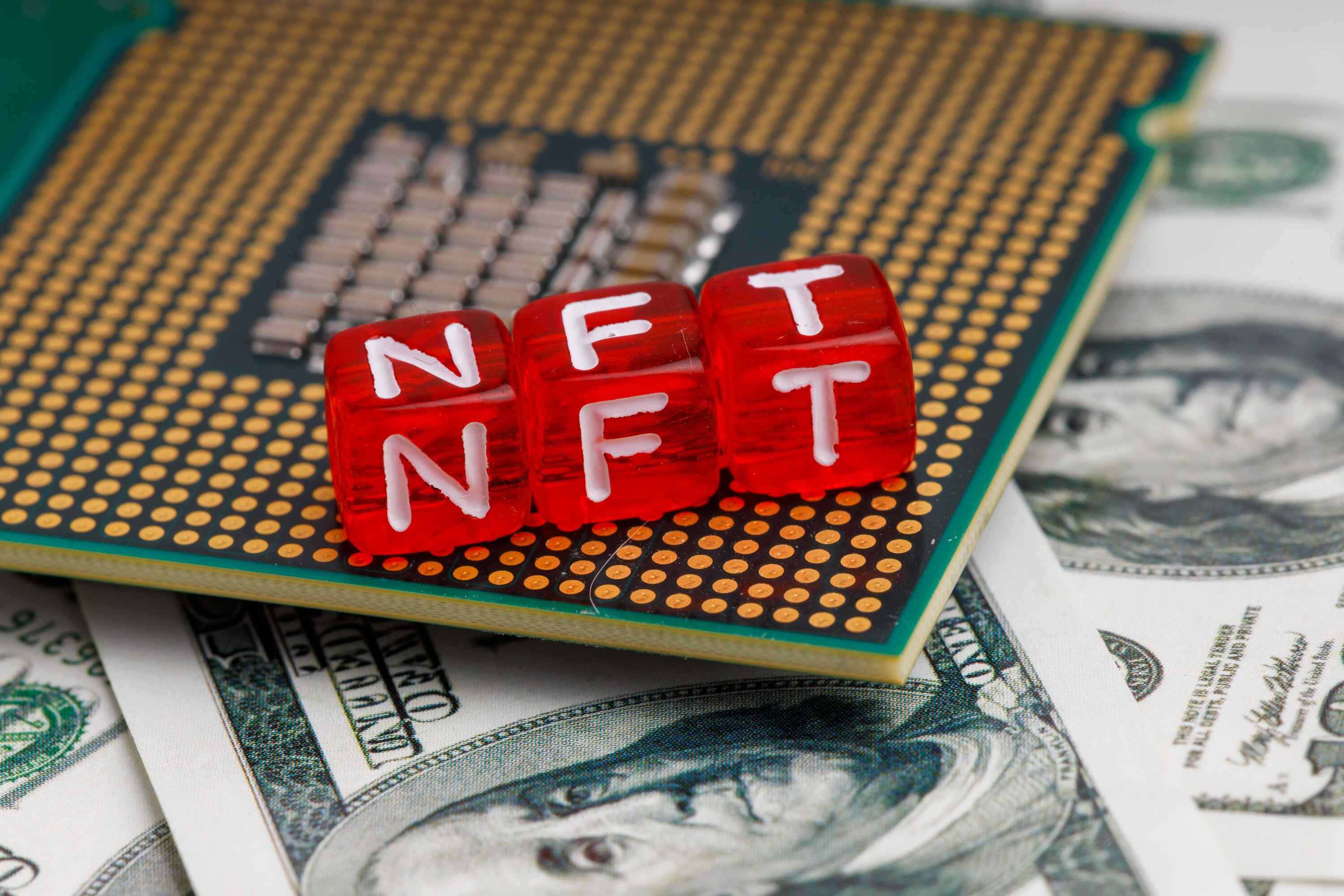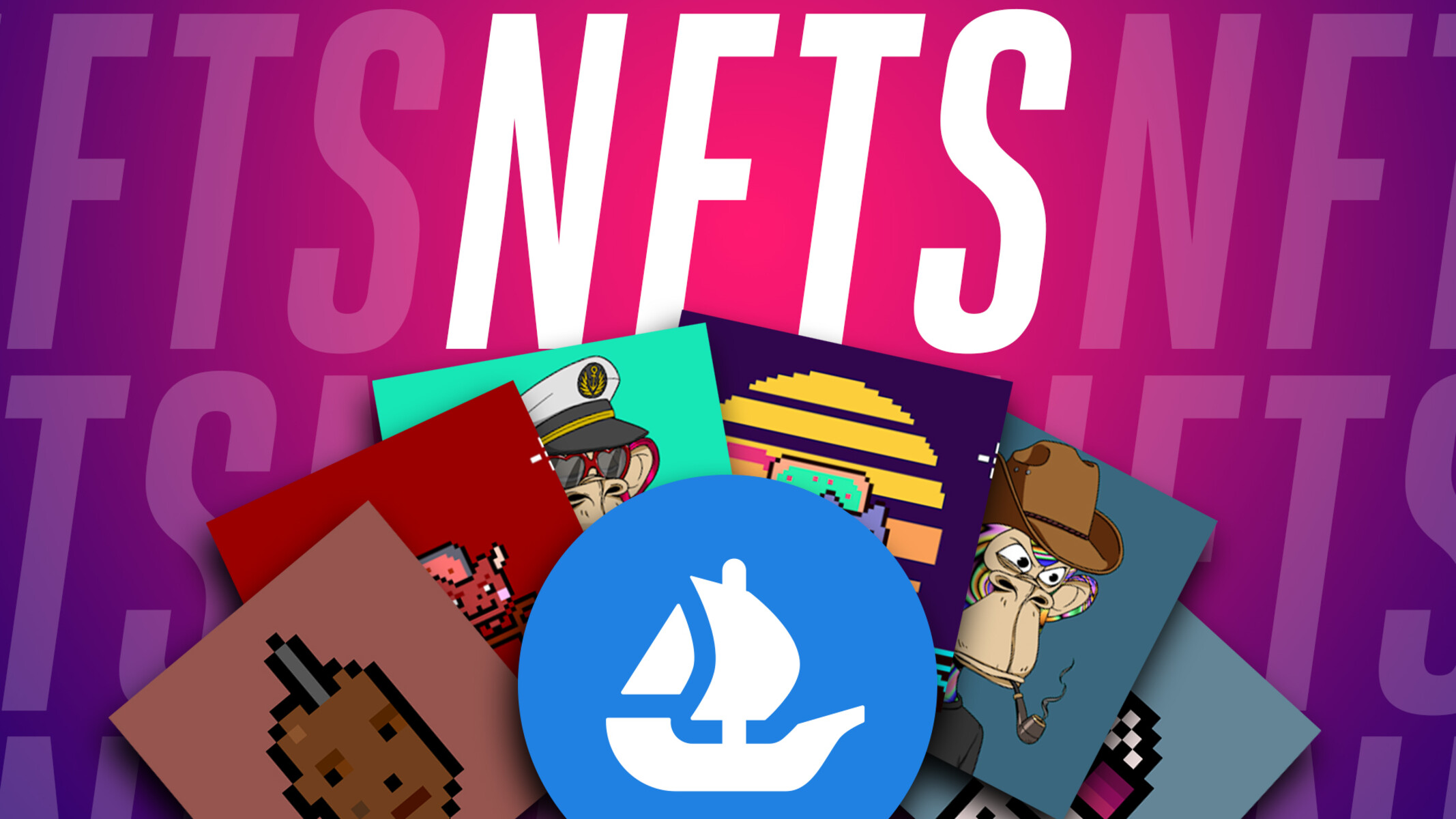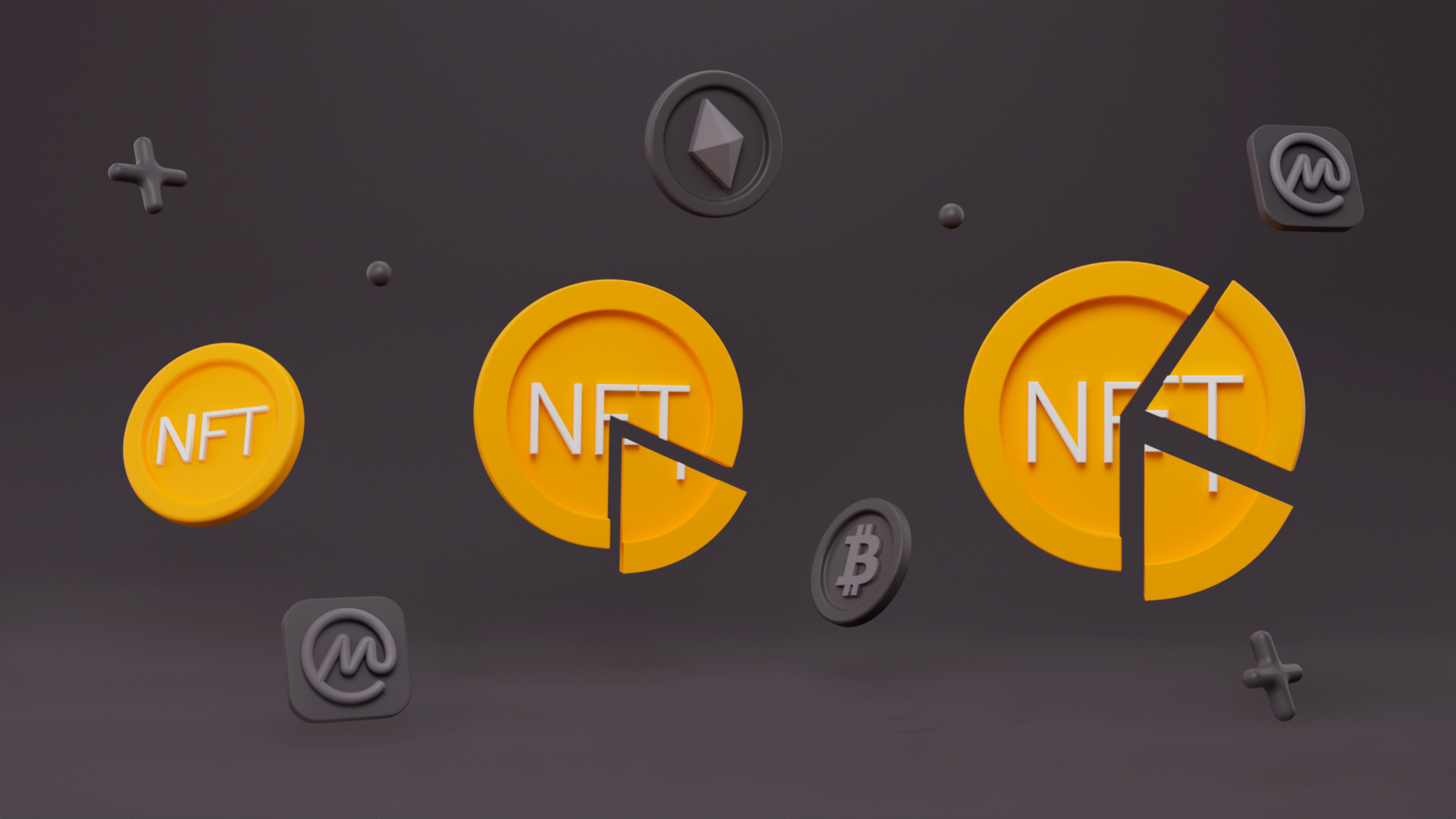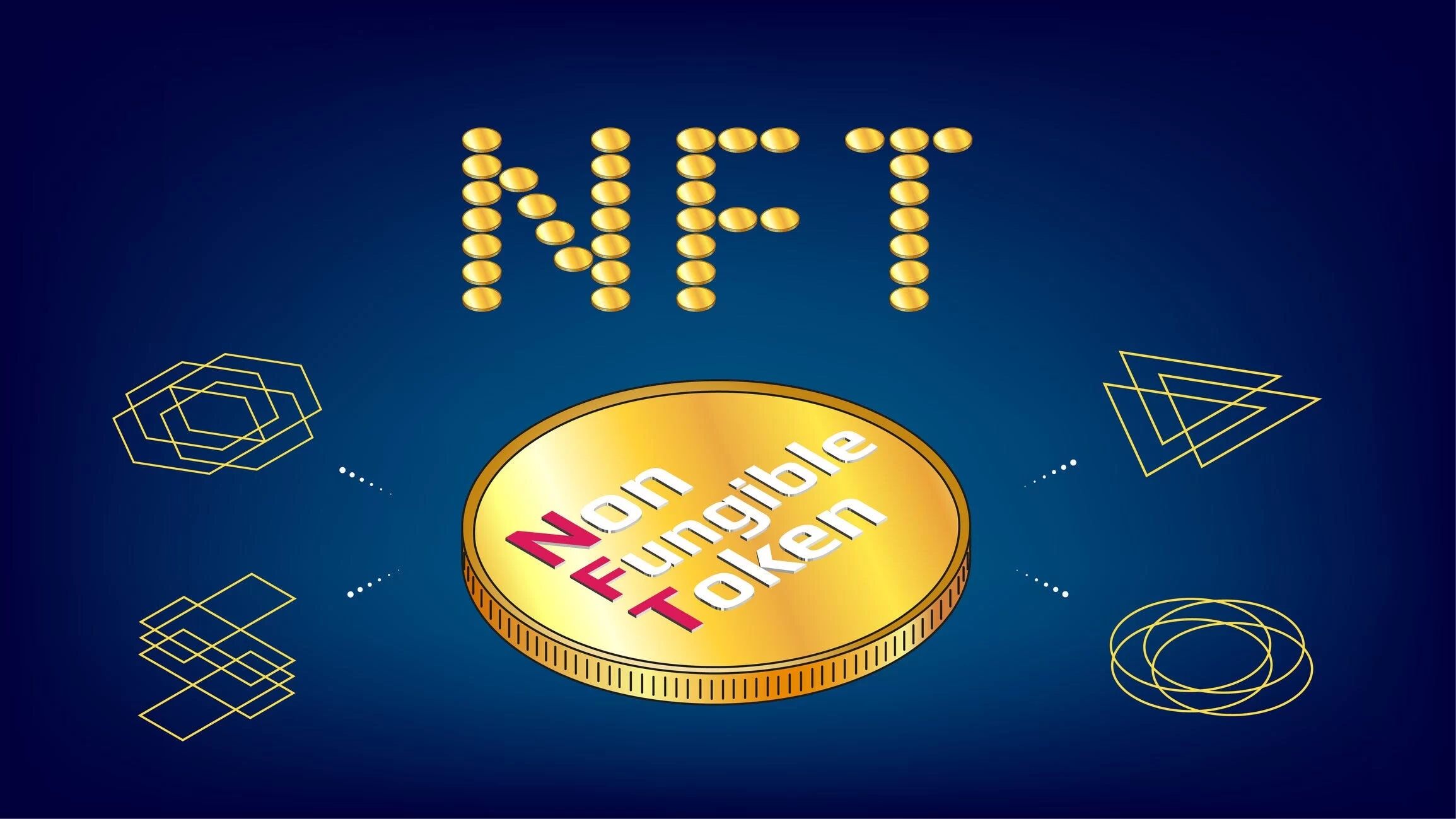Introduction
Welcome to the exciting world of virtual real estate NFTs! As technology continues to evolve, the concept of owning virtual property has gained immense popularity. Non-Fungible Tokens (NFTs) have revolutionized the way we perceive and interact with digital assets, allowing individuals to own unique and exclusive items in virtual worlds.
Virtual real estate NFTs represent a new frontier in the digital marketplace, offering individuals the opportunity to own land, buildings, and other virtual assets in immersive virtual realities. With the rise of blockchain technology, these NFTs ensure true ownership, traceability, and scarcity, making them highly sought after by collectors, enthusiasts, and investors alike.
In this article, we will explore everything you need to know to buy virtual real estate NFTs. We will discuss the benefits of owning these digital properties, guide you through the process of finding the right NFTs, provide insights on where to purchase them, and offer tips on securely storing your valuable virtual assets.
Whether you’re a blockchain enthusiast, a gamer looking to enhance your virtual experience, or an investor seeking new opportunities, virtual real estate NFTs open up a world of possibilities. So, let’s dive in and explore how you can become a virtual property owner!
What is Virtual Real Estate NFT?
Virtual real estate NFTs are digital assets that represent ownership of virtual properties within immersive digital environments. NFT stands for Non-Fungible Token, which means each token is unique and cannot be replicated or replaced. These tokens are stored on a blockchain, a decentralized digital ledger that ensures transparency and security.
Virtual real estate NFTs allow individuals to own and trade virtual land, buildings, and other assets in Metaverse platforms, virtual worlds, and decentralized applications (DApps). These digital properties can range from entire virtual islands to individual plots of land, each with its own unique characteristics and features.
One of the key features of virtual real estate NFTs is their ability to provide true ownership. With traditional digital assets, like images or videos, copies can be made and shared without any restrictions. However, virtual real estate NFTs are different. When you own a virtual property NFT, you have sole ownership rights and control over that specific asset. This provides a sense of exclusivity and scarcity, similar to owning a piece of physical real estate.
The value of virtual real estate NFTs is determined by factors such as location, size, scarcity, and demand within the virtual world or platform. Just like in the physical real estate market, popular locations or unique properties with desirable features tend to have higher values. Collectors, gamers, and investors can purchase and trade virtual real estate NFTs, potentially profiting from their investments as the virtual world evolves and gains popularity.
Virtual real estate NFTs also provide endless opportunities for creativity and customization. Owners can develop and design their virtual properties, collaborate with other users, host events, and monetize their assets through virtual businesses, advertising, or renting out space to other users. The possibilities are limited only by the imagination of the virtual property owner.
Now that we have a basic understanding of virtual real estate NFTs, let’s explore the benefits of owning these unique digital assets.
Benefits of Owning Virtual Real Estate NFTs
Owning virtual real estate NFTs comes with a multitude of benefits that make them enticing to collectors, gamers, and investors alike. Let’s take a look at some of the advantages of owning these unique digital assets:
1. Investment Potential: Virtual real estate NFTs can be seen as investment opportunities. As virtual worlds, Metaverse platforms, and DApps grow in popularity, the demand for virtual properties is likely to increase. Owners may be able to sell their virtual real estate NFTs at a higher price in the future, similar to how physical real estate can appreciate over time. This potential for return on investment attracts investors who see the long-term value in virtual property ownership.
2. Creative Expression: Virtual real estate NFTs offer a canvas for creative expression. Owners can design and personalize their virtual properties, allowing them to showcase their unique style and creativity. Whether it’s building structures, landscaping, or decorating, virtual real estate NFTs provide an outlet for artistic expression within digital environments.
3. Social Interaction: Virtual real estate NFTs also provide opportunities for social interaction. Owners can connect with other users, collaborate on projects, and host events within their virtual properties. This social aspect adds a layer of engagement and community-building, making virtual real estate NFT ownership a dynamic and interactive experience.
4. Monetization Potential: Virtual real estate NFTs can be monetized in various ways. Owners can rent out their virtual properties to other users, host events and charge admission fees, or even create virtual businesses and generate income within the virtual world. This opens up avenues for income generation and entrepreneurial pursuits in the digital realm.
5. Access to Exclusive Benefits: In some virtual worlds or Metaverse platforms, owning virtual real estate NFTs may come with exclusive benefits and privileges. These can include access to exclusive events, special features or functionality within the virtual world, and the ability to participate in platform governance or decision-making processes. Owning virtual real estate NFTs can provide a sense of prestige and exclusivity within the digital community.
6. Diversification of Assets: Virtual real estate NFTs offer a unique opportunity to diversify one’s asset portfolio. By adding virtual properties to their collection, individuals can hedge against traditional investment risks and explore a new asset class that is not correlated with the physical real estate market or traditional financial markets.
These are just a few of the benefits that come with owning virtual real estate NFTs. The immersive and interactive nature of these digital assets, along with their potential for financial gains, make them an exciting and valuable addition to any digital asset portfolio.
Where to Buy Virtual Real Estate NFTs
If you’re ready to dive into the world of virtual real estate NFTs, you may be wondering where you can purchase these unique digital assets. Here are some of the popular platforms and marketplaces where you can find and buy virtual real estate NFTs:
1. NFT Marketplaces: NFT marketplaces such as OpenSea, Rarible, and SuperRare are popular platforms where you can buy virtual real estate NFTs. These marketplaces offer a wide range of digital assets, including virtual properties, and allow users to buy directly from artists, creators, or other owners. Make sure to research the credibility and reputation of the marketplace before making a purchase.
2. Virtual World Platforms: Many virtual worlds have their own dedicated marketplaces for buying and selling virtual real estate NFTs. Platforms like Decentraland, Cryptovoxels, and The Sandbox have thriving communities and vibrant virtual economies where you can browse and purchase virtual properties. Explore the features and offerings of these platforms to find the one that aligns with your interests and investment goals.
3. Auctions and Events: Keep an eye on virtual real estate NFT auctions and events happening in the blockchain and gaming communities. They often showcase unique and one-of-a-kind virtual properties that are up for grabs. Participating in these auctions can be an exciting way to acquire highly sought-after virtual real estate NFTs, although they may come at a higher price.
4. Private Sales and Marketplaces: In addition to public marketplaces, there are also private sales and marketplaces where virtual real estate NFTs are bought and sold. These private sales can happen through Discord groups, dedicated forums, or even direct negotiations with owners. Joining communities and networks related to virtual real estate can provide access to exclusive deals and opportunities.
5. Secondary Markets: If you missed out on the initial sale of a virtual real estate NFT or are looking for specific properties, check out secondary markets. These markets allow users to buy and trade virtual real estate NFTs that are already owned by someone else. Platforms like NFTX, Nifty Gateway, and NBA Top Shot secondary markets provide opportunities to discover and purchase virtual real estate NFTs on the open market.
Remember to do thorough research and due diligence before purchasing virtual real estate NFTs. Check the authenticity, ownership history, and reputation of the seller or platform to ensure a smooth and secure transaction.
Now that you know where to find virtual real estate NFTs, let’s explore the process of researching and choosing the right virtual properties.
Researching and Choosing the Right Virtual Real Estate NFTs
When it comes to virtual real estate NFTs, thorough research and careful consideration are crucial in ensuring that you choose the right assets for your investment or personal enjoyment. Here are some steps to help you in researching and selecting the perfect virtual real estate NFTs:
1. Define Your Goals and Interests: Start by defining your goals and interests. Are you looking for virtual real estate for investment purposes or personal use? Do you have a specific virtual world or platform in mind? Understanding your goals and interests will guide your research and help narrow down your options.
2. Study the Virtual World/Platform: If you have a particular virtual world or platform in mind, study it extensively. Learn about the community, user engagement, active development, and potential for growth. Look into the virtual world’s user experience, available features, and integration with blockchain technology. This will give you an idea of the virtual world’s long-term potential and help you make an informed decision.
3. Analyze Location and Potential: Just like in the physical real estate market, location is a key factor in virtual real estate. Analyze the different locations and areas within the virtual world you are interested in. Consider factors such as popularity, demand, nearby attractions or landmarks, and growth potential. Look for areas that align with your goals and have a strong potential for appreciation in value.
4. Evaluate Unique Features and Scarcity: Pay attention to the unique features and scarcity of the virtual real estate NFTs you come across. Properties with rare or exclusive features, limited edition assets, or historical significance may hold higher value and appeal to collectors. Consider the scarcity of similar properties within the virtual world and how that might affect the desirability and value of the NFT.
5. Check Ownership Rights and Restrictions: Before purchasing a virtual real estate NFT, be aware of the ownership rights and any restrictions imposed by the virtual world or platform. Understand the terms of use, licensing agreements, and any limitations on property usage or transferability. Ensure that these align with your goals and expectations as a virtual property owner.
6. Conduct Due Diligence on Sellers: When considering virtual real estate NFTs from third-party sellers, conduct due diligence on the sellers themselves. Check their reputation, feedback, and transaction history on the marketplace or platform. Look for positive reviews and evidence of past successful transactions. This can help minimize the risk of fraudulent activities and ensure a trustworthy purchase.
7. Seek Expert Advice and Community Insights: Engage with the virtual real estate community and seek advice from experienced collectors, gamers, and investors. Participate in discussions, forums, and social media groups related to virtual real estate NFTs. By tapping into the knowledge and insights of others, you can gain valuable perspectives and make more informed decisions.
By following these steps and conducting thorough research, you will be well-equipped to choose virtual real estate NFTs that align with your goals, interests, and investment strategy. The next step is preparing your wallet and making the purchase, which we will explore in the upcoming section.
Wallet Setup and Preparing for Purchase
Before you can buy virtual real estate NFTs, it’s essential to set up a digital wallet and make the necessary preparations. Here are the steps to follow:
1. Choose a Compatible Wallet: Select a digital wallet that is compatible with the blockchain platform or marketplace where you plan to purchase your virtual real estate NFTs. Popular options include MetaMask, Trust Wallet, and Coinbase Wallet. Install the wallet app or extension on your preferred device.
2. Create or Import Your Wallet: Follow the instructions provided by the wallet provider to create a new wallet or import an existing one if you already have a compatible wallet. Make sure to securely backup your wallet’s seed phrase or private key. This is crucial for recovering your wallet in case of device loss or data corruption.
3. Buy and Transfer Cryptocurrency: In most cases, you will need to purchase and transfer cryptocurrency to your wallet in order to buy virtual real estate NFTs. Use a reputable cryptocurrency exchange to buy the required cryptocurrency (such as Ether for Ethereum-based NFTs). Follow the exchange’s instructions to transfer the cryptocurrency to your wallet address.
4. Familiarize Yourself with Gas Fees: Gas fees are the transaction fees associated with blockchain transactions. Virtual real estate NFT purchases usually involve interacting with smart contracts on the blockchain, which may incur gas fees. Familiarize yourself with gas fees and how they work on the blockchain platform you’re using. Be prepared for potential fluctuations in gas fees and consider adjusting your transaction timing accordingly.
5. Network Selection: Depending on the blockchain platform, you may have the option to choose a network, such as Ethereum Mainnet or a testnet. Make sure to select the appropriate network for buying virtual real estate NFTs to ensure compatibility and smooth transactions.
6. Familiarize Yourself with the Platform: Spend some time familiarizing yourself with the platform or marketplace where you plan to purchase virtual real estate NFTs. Understand the interface, features, and functionality of the platform. Read through any user guides or documentation provided by the platform to ensure you are comfortable with the buying process.
7. Set a Budget: Determine your budget for purchasing virtual real estate NFTs. Set a limit and stick to it. Virtual real estate NFTs can vary widely in price, so it’s important to establish a budget that aligns with your financial goals and risk tolerance.
8. Stay Informed: Keep up-to-date with news and updates from the virtual real estate NFT community. Stay informed about new releases, promotions, or special events that may offer opportunities to acquire virtual properties at favorable prices.
By properly setting up your wallet and making the necessary preparations, you’ll be ready to dive into the virtual real estate NFT market and make your first purchase. In the next sections, we will explore how to participate in virtual real estate NFT auctions and navigate the secondary markets.
Participating in Virtual Real Estate NFT Auctions
Participating in virtual real estate NFT auctions can be an exciting way to acquire unique and highly sought-after virtual properties. Here are the steps to follow when participating in these auctions:
1. Research Auction Platforms: Identify the platforms or marketplaces that host virtual real estate NFT auctions. Platforms like OpenSea, SuperRare, and Foundation are known for hosting a variety of auctions. Explore these platforms and familiarize yourself with their auction processes, rules, and bidding mechanisms.
2. Set Up your Wallet: Ensure that you have a compatible digital wallet set up and connected to the auction platform. This will allow you to bid and interact with the auction smart contracts. Make sure your wallet contains the appropriate cryptocurrency for bidding, such as Ether (ETH) on Ethereum-based platforms.
3. Study the Auction Details: Thoroughly read the auction details, including the starting price, reserve price (if any), bidding increments, and duration. Take note of any special conditions or requirements for participating in the auction. Understanding the auction parameters will help you formulate an effective bidding strategy.
4. Determine Your Maximum Bid: Set a maximum bid that you are willing to spend on the virtual real estate NFT. Consider factors such as the rarity of the property, its potential value, and your budget. Setting a maximum bid will help you avoid overspending or getting caught up in the heat of the auction.
5. Monitor the Auction: Keep a close eye on the auction as it progresses. Note the bidding activity, any competing bidders, and the current highest bid. This information will help you gauge the demand for the virtual property and make informed decisions during the auction.
6. Bid Strategically: When it comes to placing bids, timing is key. Consider bidding early to establish your presence and show interest in the property. This can discourage other bidders and potentially secure the virtual real estate NFT at a lower price. Alternatively, you can choose to bid strategically towards the end of the auction to outbid competitors.
7. Manage Emotions: Participating in an auction can be exhilarating, but it’s important to manage emotions and stick to your predetermined budget and maximum bid. Avoid succumbing to FOMO (Fear of Missing Out) and bidding beyond your means. Set a clear limit and be disciplined in your approach.
8. Winning the Auction: If you are the highest bidder at the end of the auction, congratulations! Follow the instructions provided by the auction platform to complete the purchase and transfer the virtual real estate NFT to your wallet. Ensure that you have sufficient cryptocurrency to cover the final bid amount, as well as any transaction fees.
Participating in virtual real estate NFT auctions requires careful planning, research, and strategic bidding. By following these steps, you’ll be better prepared to navigate the auction process and increase your chances of acquiring the virtual property you desire. In the next section, we will explore how to buy virtual real estate NFTs on secondary markets.
Buying Virtual Real Estate NFTs on Secondary Markets
If you missed out on an initial virtual real estate NFT sale or are looking for specific properties, secondary markets provide an alternative opportunity to buy virtual real estate NFTs. Here’s how you can navigate and make purchases on these secondary markets:
1. Explore Various Secondary Markets: Research and explore different secondary markets that specialize in virtual real estate NFTs. Platforms like NFTX, Nifty Gateway, and NBA Top Shot secondary markets offer a range of virtual properties for sale. Compare prices, availability, and reputations of these secondary markets to find one that suits your needs.
2. Browse Listings and Collections: Once you’ve selected a secondary market, browse through the listings and collections available. Utilize search filters to narrow down your options based on factors such as virtual world, location, price, or specific features you’re interested in. Take your time to thoroughly review the listings and collections to find the virtual real estate NFT that aligns with your preferences.
3. Verify Authenticity and Ownership: Before making any purchase, verify the authenticity and ownership of the virtual real estate NFT. Look for verification marks or badges on the listing that confirm the authenticity of the asset. Check the ownership history and ensure that the seller is the rightful owner of the NFT. Some platforms also provide verification processes and seller ratings to help ensure a secure and trustworthy transaction.
4. Consider Market Demand and Pricing: Take into account the market demand and pricing trends of virtual real estate NFTs within the secondary market. Price fluctuations can occur, so it’s important to evaluate the historical and current market prices. Consider the rarity, desirability, location, and features of the virtual property in relation to its price to make an informed decision.
5. Engage in Negotiations (if applicable): Depending on the platform and seller, you may have the option to negotiate the price of the virtual real estate NFT. Engage with the seller directly, express your interest, and discuss the potential for negotiation. Be respectful and reasonable during the negotiation process to reach a mutually beneficial agreement.
6. Complete the Purchase: Once you’ve identified the virtual real estate NFT you wish to purchase, follow the platform’s instructions to complete the transaction. This typically involves confirming the purchase details and transferring the agreed-upon payment, usually in cryptocurrency. Ensure that you have sufficient funds in your wallet to cover the purchase and any associated transaction fees.
7. Transfer the NFT to Your Wallet: After the purchase is complete, transfer the virtual real estate NFT from the secondary market platform to your digital wallet. Follow the specific instructions provided by the platform to initiate the transfer of ownership. Confirm the successful transfer by verifying your wallet’s NFT holdings.
Buying virtual real estate NFTs on secondary markets allows you to explore a wider range of options and have access to properties that may no longer be available on primary markets. However, it’s important to conduct due diligence, verify authenticity, and ensure secure transactions when dealing with secondary market purchases.
Now that you know how to buy virtual real estate NFTs on secondary markets, we will explore the importance of securing and storing your virtual real estate NFTs in the next section.
Securing and Storing Virtual Real Estate NFTs
Securing and storing your virtual real estate NFTs is of utmost importance to ensure the safety and longevity of your digital assets. Here are some key practices to follow:
1. Secure Your Digital Wallet: Safeguard your digital wallet that holds your virtual real estate NFTs. Set a strong and unique password, enable two-factor authentication for added security, and regularly update your wallet software to protect against potential vulnerabilities.
2. Backup Your Wallet: Create secure backups of your wallet’s seed phrase or private key. Consider using a hardware wallet or a reputable wallet backup service. Store these backups in separate physical locations to minimize the risk of loss, theft, or disaster.
3. Follow Best Security Practices: Practice good security habits, such as being cautious of phishing attempts, avoiding suspicious links or downloads, and using reputable antivirus software to protect your devices. Be mindful of the apps and browser extensions you install, as they could potentially compromise the security of your wallet.
4. Consider a Hardware Wallet: For an added layer of security, consider using a hardware wallet, such as Trezor or Ledger, to store your virtual real estate NFTs. Hardware wallets provide offline storage, protecting your assets from potential online threats.
5. Research and Choose Reliable NFT Marketplaces: When buying, selling, or trading virtual real estate NFTs, opt for reputable marketplaces or platforms with strong security measures and a solid track record of protecting user assets. Research the marketplace’s security practices, user reviews, and history of any security breaches before engaging in transactions.
6. Be Wary of Scams and Phishing Attempts: Be cautious of scams and phishing attempts related to virtual real estate NFTs. Be vigilant about the platforms, marketplaces, or individuals you engage with. Verify the authenticity of any offers or communications and double-check the wallet addresses for payment transactions.
7. Consider Cold Storage: For long-term storage of your virtual real estate NFTs, consider utilizing cold storage methods. Cold storage involves storing your assets offline, such as on a hardware device or even on paper, to protect them from online threats. This reduces the risk of unauthorized access and potential loss due to hacks or technical failures.
8. Stay Informed and Updated: Stay updated on the latest security practices and developments in the virtual real estate NFT space. Keep an eye on industry news, security advisories, and any updates from wallet providers and marketplaces. By staying informed, you can proactively adapt your security measures to evolving threats.
By implementing these security practices and exercising vigilance, you can minimize the risk of unauthorized access or loss of your virtual real estate NFTs. Protecting these digital assets ensures that you can continue to enjoy and capitalize on their value in virtual worlds and platforms.
Now that you have learned how to secure and store your virtual real estate NFTs, let’s wrap up this guide with a brief recap of the key points discussed.
Conclusion
Virtual real estate NFTs offer a unique and exciting opportunity to own and interact with digital properties in virtual worlds and Metaverse platforms. Throughout this guide, we have explored the world of virtual real estate NFTs, discussing their definition, benefits, where to buy them, how to research and choose the right properties, and how to navigate virtual real estate NFT auctions and secondary markets. We’ve also covered the importance of securing and storing your virtual real estate NFTs.
From the investment potential and creative expression opportunities to social interaction and monetization possibilities, virtual real estate NFTs open doors to a new realm of digital ownership. By understanding the features, scarcity, and potential of virtual properties, you can make informed decisions and pursue your goals as a virtual real estate owner.
Remember to conduct thorough research and due diligence when purchasing virtual real estate NFTs. Understand the platform, verify authenticity, and be mindful of security measures to protect your digital assets. Setting up a secure digital wallet, following best security practices, and considering hardware or cold storage are essential for safeguarding your virtual real estate NFTs.
As the world of virtual reality and blockchain technology continues to evolve, virtual real estate NFTs present a thriving and dynamic market. Whether you’re an investor, gamer, or enthusiast, owning virtual real estate NFTs allows you to immerse yourself in digital worlds, express creativity, connect with communities, and potentially profit from your investments.
So, take the knowledge and insights you’ve gained from this guide, dive into the exciting world of virtual real estate NFTs, and begin your journey as a digital property owner. Embrace the possibilities, adapt to the rapidly changing landscape, and enjoy the endless opportunities that virtual real estate NFTs bring.

























